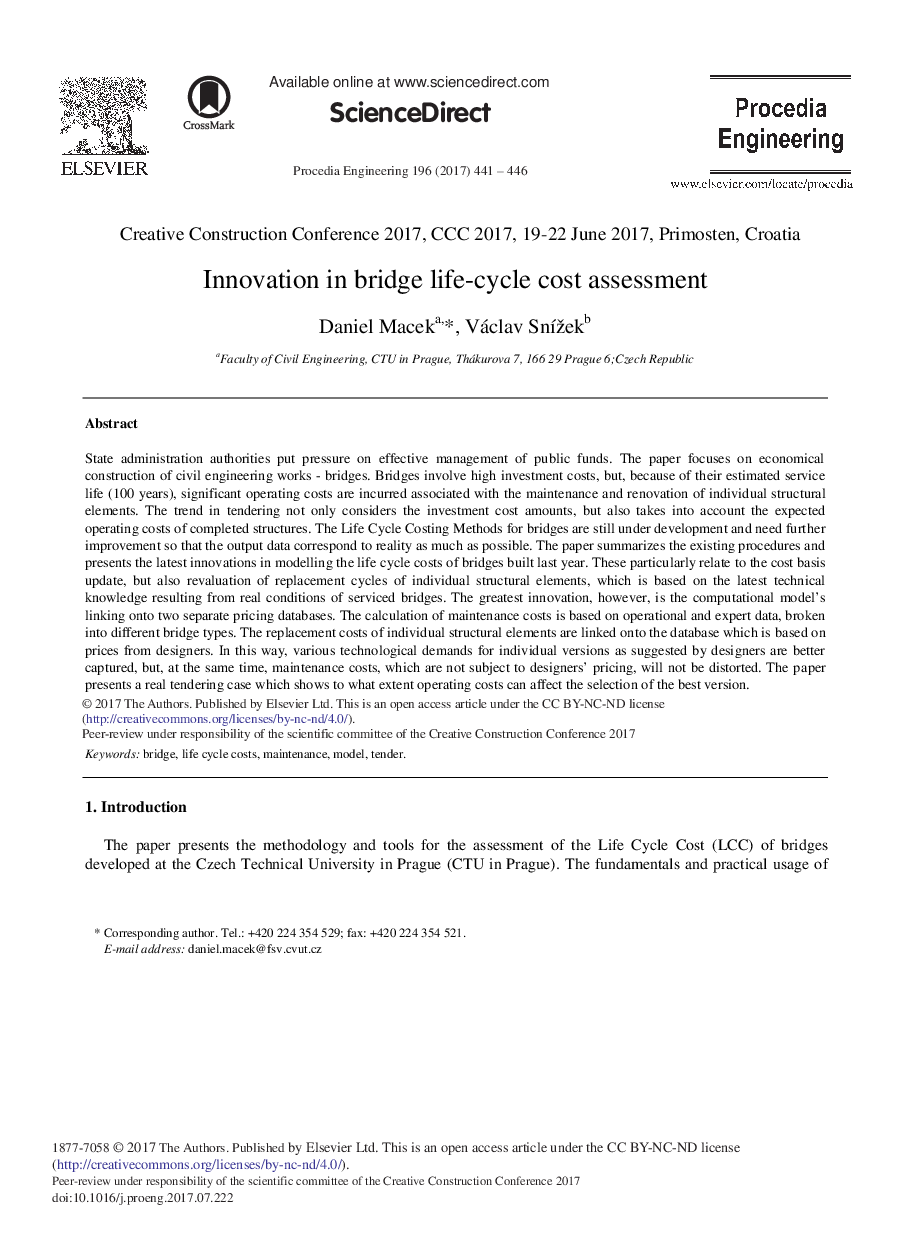| Article ID | Journal | Published Year | Pages | File Type |
|---|---|---|---|---|
| 5026970 | Procedia Engineering | 2017 | 6 Pages |
Abstract
State administration authorities put pressure on effective management of public funds. The paper focuses on economical construction of civil engineering works - bridges. Bridges involve high investment costs, but, because of their estimated service life (100 years), significant operating costs are incurred associated with the maintenance and renovation of individual structural elements. The trend in tendering not only considers the investment cost amounts, but also takes into account the expected operating costs of completed structures. The Life Cycle Costing Methods for bridges are still under development and need further improvement so that the output data correspond to reality as much as possible. The paper summarizes the existing procedures and presents the latest innovations in modelling the life cycle costs of bridges built last year. These particularly relate to the cost basis update, but also revaluation of replacement cycles of individual structural elements, which is based on the latest technical knowledge resulting from real conditions of serviced bridges. The greatest innovation, however, is the computational model's linking onto two separate pricing databases. The calculation of maintenance costs is based on operational and expert data, broken into different bridge types. The replacement costs of individual structural elements are linked onto the database which is based on prices from designers. In this way, various technological demands for individual versions as suggested by designers are better captured, but, at the same time, maintenance costs, which are not subject to designers' pricing, will not be distorted. The paper presents a real tendering case which shows to what extent operating costs can affect the selection of the best version.
Related Topics
Physical Sciences and Engineering
Engineering
Engineering (General)
Authors
Daniel Macek, Václav SnÞek,
